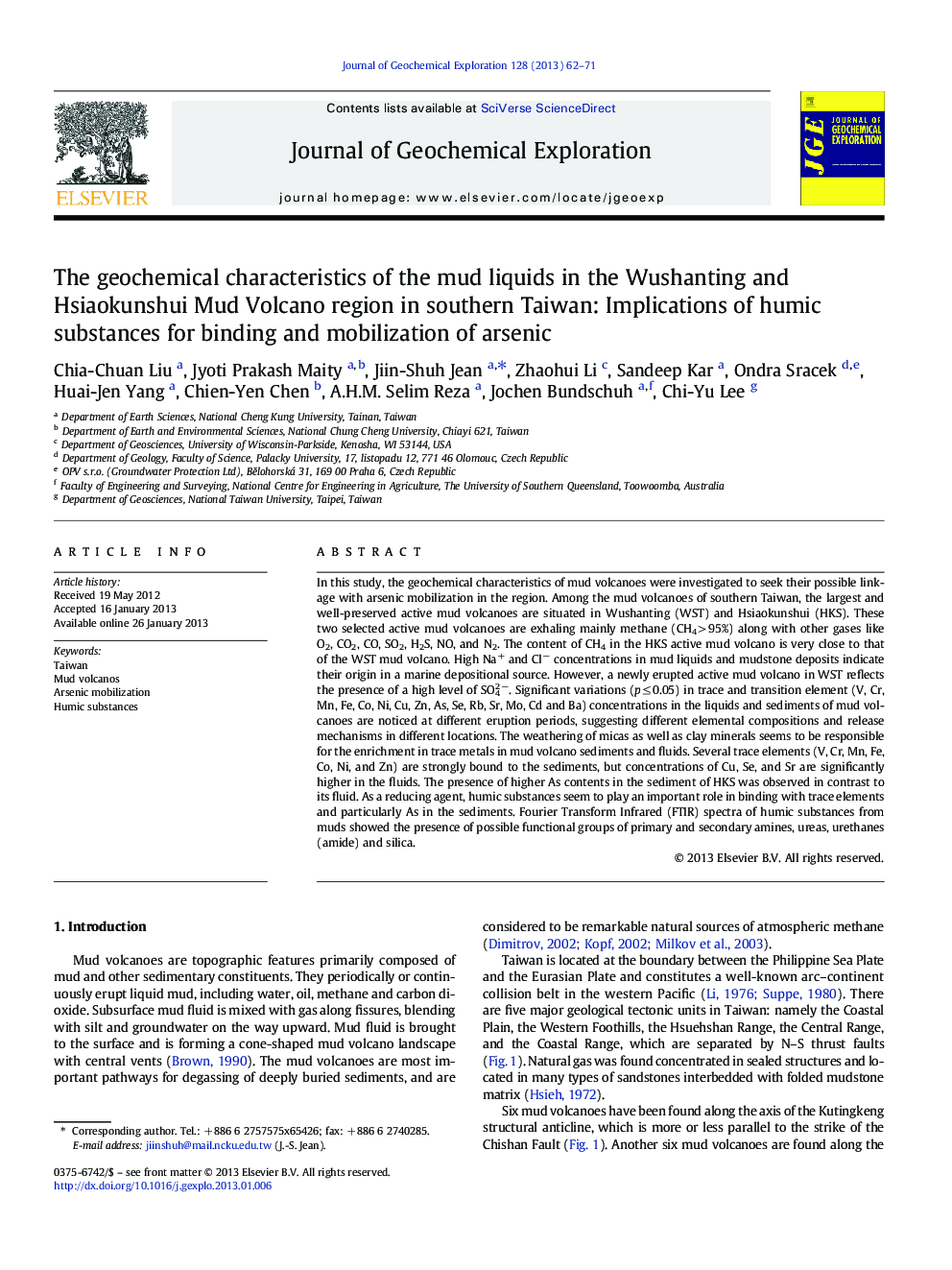| کد مقاله | کد نشریه | سال انتشار | مقاله انگلیسی | نسخه تمام متن |
|---|---|---|---|---|
| 4457628 | 1620929 | 2013 | 10 صفحه PDF | دانلود رایگان |

In this study, the geochemical characteristics of mud volcanoes were investigated to seek their possible linkage with arsenic mobilization in the region. Among the mud volcanoes of southern Taiwan, the largest and well-preserved active mud volcanoes are situated in Wushanting (WST) and Hsiaokunshui (HKS). These two selected active mud volcanoes are exhaling mainly methane (CH4 > 95%) along with other gases like O2, CO2, CO, SO2, H2S, NO, and N2. The content of CH4 in the HKS active mud volcano is very close to that of the WST mud volcano. High Na+ and Cl− concentrations in mud liquids and mudstone deposits indicate their origin in a marine depositional source. However, a newly erupted active mud volcano in WST reflects the presence of a high level of SO42 −. Significant variations (p ≤ 0.05) in trace and transition element (V, Cr, Mn, Fe, Co, Ni, Cu, Zn, As, Se, Rb, Sr, Mo, Cd and Ba) concentrations in the liquids and sediments of mud volcanoes are noticed at different eruption periods, suggesting different elemental compositions and release mechanisms in different locations. The weathering of micas as well as clay minerals seems to be responsible for the enrichment in trace metals in mud volcano sediments and fluids. Several trace elements (V, Cr, Mn, Fe, Co, Ni, and Zn) are strongly bound to the sediments, but concentrations of Cu, Se, and Sr are significantly higher in the fluids. The presence of higher As contents in the sediment of HKS was observed in contrast to its fluid. As a reducing agent, humic substances seem to play an important role in binding with trace elements and particularly As in the sediments. Fourier Transform Infrared (FTIR) spectra of humic substances from muds showed the presence of possible functional groups of primary and secondary amines, ureas, urethanes (amide) and silica.
► Geochemical characteristics and variability of Taiwan mud volcanoes were investigated.
► FTIR analysis of HA showed amines, ureas, urethanes (amide), and silicon in mud.
► Primary amine may have stronger affinity to bind with trace elements or cations.
► Organic matter may play a significant role in mobilizing arsenic in mud volcanoes.
Journal: Journal of Geochemical Exploration - Volume 128, May 2013, Pages 62–71